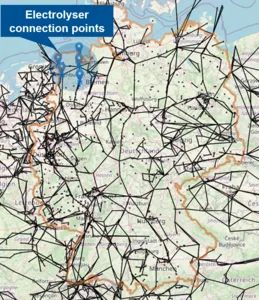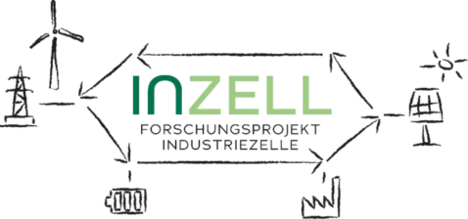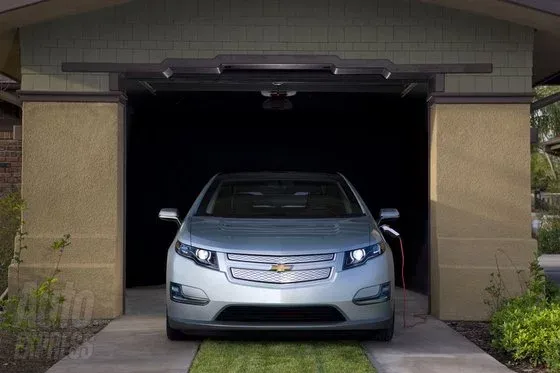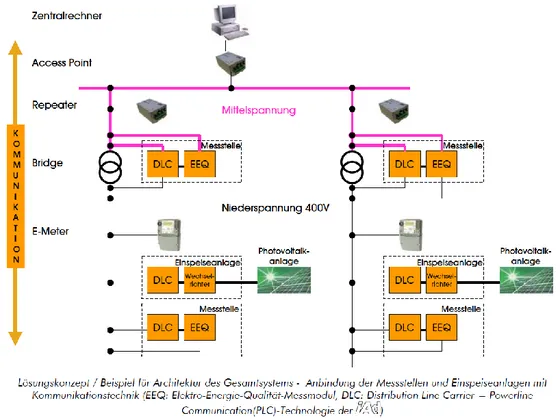Completed Research Projects
- Risk assessment of electrolyser failure: Analysis of grid faults and grid-serving behavior
- INZELL - Grid support and system service provision by an industrial cell with stand-alone grid capability and renewable energies
- Intelligent distribution grids with communicating equipment
- Studies in the German and European interconnected grid
- From the electricity market to grid dynamics: Holistic electricity system analysis at TUM
- Effectiveness and interaction of different voltage maintenance concepts in the distribution grid
- Local island grid supply and accelerated grid restoration with decentralized generation plants in the event of large-scale power outages
- Integration of battery storage in distribution grids with a high proportion of decentralized and fluctuating feeders
- Study on regulation Q(U)
- Integration of electromobility into the energy supply grid
- Design, dimensioning and control of electrical distribution grids with a high proportion of decentralized and fluctuating feeders
- Effects of decentralized renewable energy generation on distribution grids
- Connection of offshore wind farms to the extra-high voltage grid
- Decentralized monitoring and improvement of grid quality using power electronics and new ICT technologies
- Analyzing the effects of high PV feed-in and investigating how to better integrate it into medium and low-voltage grids
- Dynamic investigations in the German interconnected grid
Risk assessment of electrolyser failure: Analysis of grid faults and grid-serving behavior

Over the next decade, the installed capacity of electrolysers will increase from a few hundred megawatts to several gigawatts. In the current coalition agreement, the German government plans to increase the capacity of electrolysers up to 10 GW by 2030. Due to the existing gas infrastructure for hydrogen and the proximity of surplus wind power, the northern German grid is expected to experience an accumulation of grid connection requests. The uncoordinated loss of several gigawatts of electrolyser load due to a grid fault poses a high risk to dynamic stability. This study provides a qualitative risk assessment of the impact of an electrolyser loss and evaluates the advantages and disadvantages of different technical requirements for grid connection.
Download the executive summary here.
LINDA 2.0 - Local (partially) automated stand-alone grid and emergency supply with decentralized generation plants in the event of large-scale power outages

The consequences of a prolonged and widespread power outage can come close to a national disaster with serious consequences for civil society. The use of decentralized energy supply systems as an emergency supply for critical infrastructure by means of island grids can significantly reduce the damage in such scenarios. In the LINDA research project (Local island grid supply and accelerated grid restoration with decentralized generation plants), a concept for stable island grid operation in the event of an emergency supply was developed and tested under real conditions in a southern German grid area. In LINDA 2.0, the LINDA concept will be transferred to another test area and (partially) automated. The object of investigation is a constellation of a run-of-river power plant as an island grid-forming unit and drinking water supply as a critical infrastructure; several field tests are planned. In addition, a hybrid unit will be developed and tested in the distribution grid as part of the project. The hybrid genset is intended to be an alternative to a conventional standby genset and consists of an off-grid inverter with battery storage and a diesel generator as a range extender. During regular operation, the range extender is switched off and the genset operates completely emission-free (noise, exhaust gas and CO2).
Further information:
INZELL - Grid support and system service provision by an industrial cell with stand-alone grid capability and renewable energies

Increasing the quality of supply and securing their own power supply in the event of prolonged voltage dips or supply failures is becoming increasingly important for industrial companies, as production downtimes can lead to high costs and damage. Many companies also have decentralized generation systems in order to be as independent as possible from electricity procurement costs. In conjunction with battery storage systems and supply systems that can be switched on or off and an intelligent control concept, it is possible to continue supplying power in stand-alone grid operation. In the INZELL project, a concept for off-grid operation of an extensive industrial medium-voltage grid is first being developed in a simulation and then tested in multi-stage field trials. The aim is to specifically identify and utilize flexibilities in the electrical behavior of the industrial grid. In addition, recommendations for action for other industrial companies with a hybrid structure of supply and generation plants will be derived and criteria for the marketing of possible ancillary services will be defined. The focus here is on ancillary services that an industrial operation can provide in parallel grid operation to support the public grid, such as a defined contribution to grid restoration or a controlled active and reactive power balance at the transfer point.
Further Information: Projektwebsite
Intelligent distribution grids with communicating equipment

The steadily growing number of renewable, decentralized generation plants and the increasing use of electronic switching power supplies are increasingly leading to limit violations in low-voltage distribution grids (rising harmonic levels, non-compliance with the required voltage band). In order to increase the load capacity of the grids while maintaining high grid quality, small, decentralized systems will also have to participate in the provision of grid services in the future. To ensure optimal interaction between a large number of operating resources (battery storage systems, PV inverters, longitudinal controllers and CHP units), these are to be communicatively connected to a central master computer at the transformer station. The aim is to design a robust and practical control concept for controlling the individual operating resources. The concept will first be examined using simulations, implemented in the laboratory and then tested for suitability in a subsequent field test.
Investigations in the German and European interconnected grid

Due to the increasing integration of renewable energies into the interconnected system and the associated geographical imbalance between generation and consumption, there will be more frequent power transfers over long distances in the future. These power flows place new demands on the grid infrastructure and, above all, require new lines in order to avoid overloading the grid and keep voltages within permissible limits. In addition, the increasingly decentralized generation structure increases the interactions between the distribution and transmission grid. With the help of a detailed model of the interconnected system, dynamic simulations of power oscillations can be carried out in addition to load flow calculations to identify overloaded lines (see figure). A suitable simulation of the distribution grids, primarily in Germany, can be used to investigate the effects of inverter systems on the dynamic behavior of the overall system.
From the electricity market to grid dynamics: Holistic electricity system analysis at TUM

The Professorship of Power Transmission Systems (Prof. R. Witzmann) and the Chair of Renewable and Sustainable Energy Systems (Prof. T. Hamacher) at the Technical University of Munich are cooperating with the aim of offering a holistic electricity system analysis. By this they mean the combined consideration of all aspects relevant to the electricity grid, such as the development of conventional power plant deployment, taking into account the expansion of renewable energies in Europe, electricity market developments, line utilization, frequency and voltage behavior. The grid calculations are carried out using an AC model of the European interconnected grid (ENTSO-E synchronous area) based on publicly available data.
Further Information:Overview as PDf
See also: www.ei.tum.de/ens/
Effectiveness and interaction of different voltage maintenance concepts in the distribution grid

In the distribution grids in rural and rural areas, compliance with the voltage tolerance band, which is defined in the EN 50160 standard, primarily limits the maximum connection capacity of generation plants. A solution to the voltage problem in the distribution grids therefore leads directly to a reduction in the need for grid expansion and thus the costs of the energy transition. The U-Control project aims to compare different methods for static voltage maintenance at medium and low-voltage level, to evaluate the effectiveness of these methods, to optimize the parameterization of the methods and to fundamentally investigate the stability of these methods for the first time in simulations, laboratory and field tests.
See also: www.u-control.de
Local stand-alone grid supply and accelerated grid restoration with decentralized generation plants in the event of large-scale power outages

The consequences of a prolonged and widespread power outage can come close to a national disaster with serious consequences for civil society. By using decentralized energy supply systems in island grids, a significantly improved level of supply could be achieved, at least for sensitive consumers such as hospitals, police, fire departments, etc. The aim of the research work is to develop a general concept that is scalable across all voltage levels and enables stable island grid operation together with the existing mix of decentralized generation plants. When the superordinate grid levels become available again, the decentralized stand-alone grids are to be integrated into the superordinate grid quickly, automatically and with as few interruptions as possible.
Integration of battery storage in distribution grids with a high proportion of decentralized and fluctuating feeders

Today's distribution grids are reaching their permissible load limits due to the strong expansion of renewable energies. The use of battery storage systems can provide a solution to this problem through the optimized integration of decentralized generators and also contribute to a more efficient and economical use of renewable energies. The main research topics here are the development and evaluation of intelligent control strategies for the economical and grid-friendly use of battery storage systems.
Studie Regelung Q(U)
The stability behavior of a voltage-dependent reactive power control Q(U) is to be neutrally assessed using the conditions in real low-voltage grids in a model test at the Department of Electrical Power Grids at the Technical University of Munich. The aim is to clarify whether stable operation without impermissible interactions between the inverters is possible with a universal parameter set in all installation situations to be expected in the grid in reality.
Integration of electromobility into the energy supply grid

Due to the scarcity of oil resources and climate change, there is currently a lot of research into electromobility as an alternative to cars with combustion engines. The vehicles are charged at the home's own power socket and therefore pose new challenges for the energy supply grid. The energy storage systems required for driving can be used as grid service providers and thus balance load peaks and ensure better coverage of energy generation and consumption. The energy storage systems of electric vehicles also facilitate the integration of non-scheduled energy generation systems such as photovoltaic systems. The Department of Electrical Energy Supply Networks is researching concepts for integrating electric vehicles into the grid and their effects on the various levels of the energy supply grids.
Design, dimensioning and control of electrical distribution grids with a high proportion of decentralized and fluctuating feeders

Since the “Act on the Priority of Renewable Energies” (EEG) came into force, there has been a steady increase in the number of decentralized generators in Germany. The German government's targets envisage a 25 % to 30 % share of renewable energy sources in gross electricity consumption by 2020. Low-voltage distribution grids are increasingly reaching their load limits, particularly due to the enormous feed-in from photovoltaic systems, and as an alternative to the necessary expansion of the distribution grids, excess electrical energy can be temporarily stored on site. In times of high load and low irradiation, the buffered energy is fed back into the grid and thus helps to even out the load profile. The use of regeneratively generated electrical power to substitute other primary energy sources (production of hydrogen, use in electric vehicles) can also contribute to a balanced grid load. Grids and storage systems should be optimally utilized and operated economically.
Effects of decentralized renewable energy generation on the distribution grids

Renewable energies are the focus of European and German energy policy. The share of renewable energies in electricity consumption in Germany is to be doubled to 12.5% by 2010, with a target of more than 20% by 2020. Specific support measures have been introduced to achieve this. In southern Germany, the proportion of photovoltaic systems in particular has risen sharply, which preferably feed into the distribution level and pose new challenges for planners and operators. The capacity of existing distribution grids for decentralized energy generation and the potential for optimizing various technical options for energy- and cost-efficient feed-in are being investigated.

Connection of offshore wind farms to the extra-high voltage grid
Since the adoption of the Infrastructure Planning Acceleration Act (17.12.2006), German energy suppliers have also been responsible for providing a transmission grid up to the transformer terminals of the planned offshore wind farms (OWP) in the North and Baltic Seas. In the North Sea alone, almost 30 wind farms are planned at various distances from the coast. The companies E.ON and Vattenfall have applied for a total feed-in capacity of around 12,000 MW by 2012. In the first stage of expansion, around 80 wind turbines with up to 5 MW each will be connected to each wind farm.
The Department of Electrical Power Grids is working on the selection of suitable transmission technologies and the development of an overall concept for the offshore transmission grid.
Decentralized monitoring and improvement of power quality using power electronics and new ICT technologies

Due to the increasing unsteady, decentralized feed-in of electricity (photovoltaics (PV), wind, combined heat and power plants (CHP), ...), electrical energy supply grids are increasingly reaching the limits of their load capacity, especially when the maximum permissible voltage is reached. Previous considerations envisage either a limitation of decentralized feed-in or a cost-intensive grid expansion to remedy these problems. Another problem is increasing interference emissions from power electronic systems (harmonics).
An innovative communication concept and system concept for solving real-time control tasks in energy distribution grids could be used to record the status of the grids (grid quality) in a cost-effective, locally differentiated and timely manner and, by controlling the decentralized inverters, make a significant contribution to increasing the transmittable power and improving the grid quality, i.e. stabilizing the voltage, compensating for reactive power, filtering/compensating for harmonics, etc. The NETZQ project aims to develop an innovative communication concept and system concept for solving real-time control tasks in energy distribution grids. In the NETZQ project, a corresponding device technology is being developed and this proposed solution is being tested in a model trial in two sub-grids (urban, rural area).
Further information: Poster und Flyer
Analysis of the effects of high PV feed-in and investigation for better integration in medium and low-voltage grids

The ever-increasing number of decentralized feeders poses new challenges for grid supply companies. While the power flow has always been directed from large power plants to end customers since the creation of the grids until a few years ago, there are now also times when power is fed back from the low and medium-voltage grid.
In cooperation with Munich University of Applied Sciences and e.on Bayern, the current grid status of a medium-voltage grid and some subordinate low-voltage grids with high PV penetration is being analyzed in the “Grid of the Future” research project. The use of intelligent electricity meters by system operators and measuring points at transformer stations and substations is intended to show the effects of feeding renewable energy into both grid levels. The results will be used to develop concepts and measures to expand and manage the grid as efficiently as possible and thus ensure the usual security of supply even with high PV penetration.
Dynamic investigations in the German interconnected grid
With the aim of covering the majority of Germany's energy requirements with renewable energies, more and more conventional large-scale power plants with their rotating masses are being replaced by distributed power electronic converters. For this reason, there is an urgent need to analyze the influence of power generation by large-scale distributed converters on the system stability of the extra-high voltage level.
Using suitable models of the German interconnected grid and the neighboring grids, the influence of the converters on voltage stability and the effects of the missing rotating masses in the event of a fault are investigated.